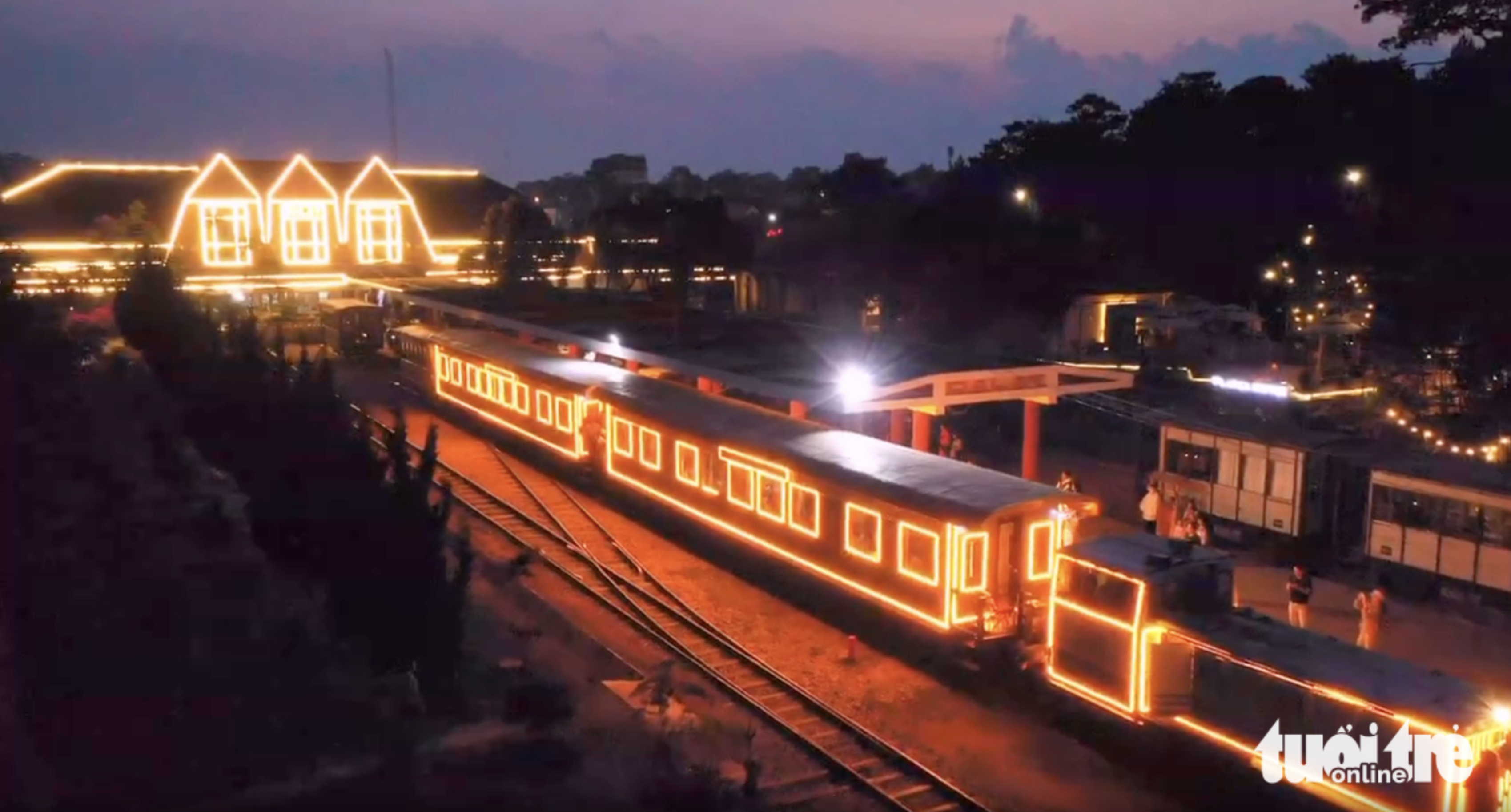Late in June, a ceremony took place to name a small square in the center of the 16th arrondissement of Paris after Do Huu Vi, in the presence of Paris Deputy Mayor Laurence Patrice, Mayor of the 16th arrondissement Francis Szpiner, representatives of the Vietnamese Embassy in France, along with Do Huu Vi’s relatives, local officials and residents.
| The naming ceremony of Do Huu Vi Square. Photo: C’est le Temps de l’amour Group |
Do Huu Vi Square is located at the intersection of Versailles Avenue and Quai Louis Blériot, 16th arrondissement, overlooking the Radio France headquarters and the Grenelle Bridge.
A hero of Cholon, Saigon
Do Huu Vi was born in Cholon as the youngest son of Governor Do Huu Phuong, a landowner in Cochinchina at that time, who was allegedly the second wealthiest man in the old Saigon.
According to Trang An Newspaper, No. 856, currently archived at the National Library of Vietnam, Do attended La San Taberd High School (Saigon), before being sent by his father to France to study at the Lycée Janson de Sailly (Paris) and then in preparatory classes at the Lycée Louis le Grand. At the end of 1904, he took the entrance exam and was accepted into the Special Military School of Saint Cyr.
In 1906, Do graduated with the rank of Second Lieutenant and joined the first regiment of the French Foreign Legion, fighting in Casablanca, Morocco. In mid-1908, he returned to France, joined the crew of Louis Charles Joseph Blériot, flew over the English Channel, and became interested in flying. During that time, he befriended young pilot Victor Ménard.
Between 1908 and 1910, Do volunteered to fight on the border between Morocco and Algeria. After that, he returned to France again to receive military pilot training and was granted a co-pilot’s license by the Aero-Club de France. At the end of 1911, he and Ménard made a flight around France.
|
A portrait of Do Huu Vi was on display in the “Portraits de France” exhibition at the Musée de l’Homme in Paris, held at the beginning of 2022. Photo: Ken Nguyen |
In December 1912, he returned to Morocco, joined General Brulard’s reconnaissance squadron, and was promoted to First Lieutenant. At the end of 1913, he took a leave of absence and headed back to Indochina. Here he was asked by the then Governor-General, Albert Sarraut, to help build facilities for the colonial aviation agency.
Do also took part in testing a type of surfing boat, powered by an aircraft propeller engine, built by Charles de Lambert, on the Mekong and Red Rivers. His airshows in Saigon and Hanoi were hugely popular among the locals in those days.
Becoming famous during World War I
In August 1914, Do Huu Vi volunteered to return to France and join a reconnaissance squadron in World War I. He achieved many military feats and was made a Chevalier of the Legion of Honor by the French government.
In 1915, on the way back to his unit after a battle, his plane was caught in a storm and crashed in the village of Laffaux (Picardie region, France). He was seriously injured with a broken left arm, fractured jaw, and skull, but still came out of a nine-day coma.
After receiving treatment, Do continued to fight. Unable to pilot aircraft, he took the position of an aerial observer in the crew with pilot Marc Bannin.
| Lieutenant De la Fargue of the Spahis Algerian army (left) and lieutenant Do Huu Vi of the Le Duong army (right). File photo |
In 1916, due to ill health, he was forced to give up his career as a pilot and reassigned to the infantry. He was then promoted to Captain and appointed commander of the 7th Company of the 1st Foreign Legion which fought the Battle of the Somme.
On July 9, 1916, during an attack on the Germans, while leading the assault unit, Do was hit by many bullets and died on the front line. He was interred in the village of Dompierre in the Somme region. In 1921, the eldest brother Do Huu Chan had his remains sent to Vietnam and buried in the family plot.
Among the first recognized French pilots from Indochina like Phan Tat Tao, Cao Dac Minh, Felix Xuan Nha (Nguyen Xuan Nha), Do Huu Vi is considered the most famous.
Therefore, the French government issued stamps featuring his image throughout Indochina, as well as named many schools and streets in the colonies and even in France after him.
Leaving his name on the roads
Currently, there are nearly 200 streets and landmarks in France named after Vietnamese places or characters. The preservation of their names in public memory through public spaces is intended to concretize French President Emmanuel Macron’s aspiration to “strengthen the unity and cohesion of the peoples, with their diversity”.
|
The Do Huu Vi stamp was issued in Indochina. Photo: Wikipedia |
Before 1945, Cua Bac Street in Hanoi was also called Do Huu Vi Street. In Saigon, there used to be a street named Do Huu Vi, now renamed Huynh Thuc Khang Street (District 1). Da Nang also had Do Huu Vi Street, which is now Hoang Dieu Street.
Today, in the village of Laffaux in Picardie, where his plane crashed, there is a short road named Do Huu Vi, located in a residential area, crossing the hill with old tunnels and blockhouses next to it.
Since Do Huu Vi spent most of his life living and working in France, newspaper articles from the period were the only records of him.
Not only being honored as one of more than 300 people of foreign descent with contributions to France, but also is the only Asian face to be included in the “Portraits de France” exhibition at the Musée de l’Homme in Paris, held at the beginning of 2022.







